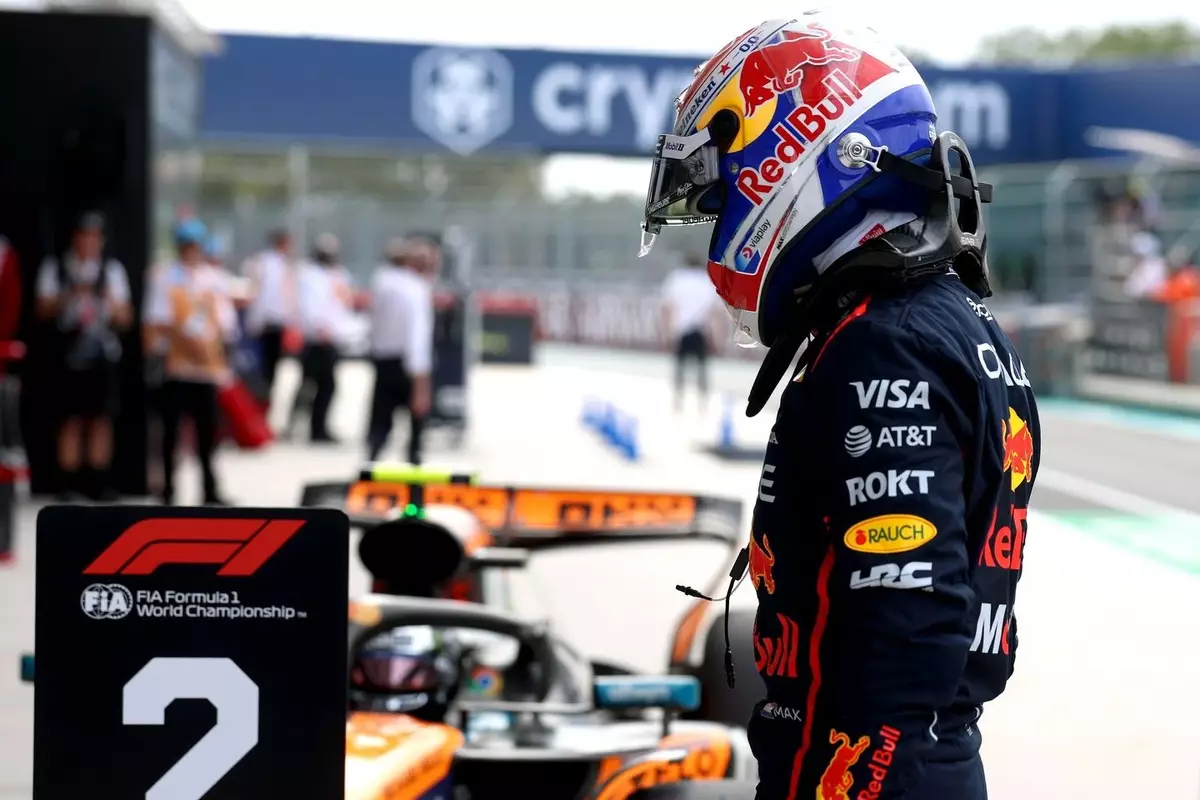As the Miami Grand Prix draws attention, Max Verstappen is in the spotlight not just for his remarkable driving skills, but also for the psychological warfare that underpins contemporary Formula 1 racing. While Verstappen clinched his third pole position of the season—his undeniable talent on full display—it’s clear that the pressure he faces from rival teams, notably McLaren, is mounting. The result of the qualifying session, where he edged out Lando Norris and Andrea Kimi Antonelli by slender margins of just 0.065 and 0.067 seconds respectively, indicates a tightly contested field. This thin barrier not only raises the stakes for the race itself but showcases the competitive climate of contemporary motorsport where every fraction of a second counts.
Verstappen’s comments following the session provide further insights into the mental game at play. His candid acknowledgment of McLaren’s prowess in race conditions signals both respect for their capabilities and a strategic positioning—suggesting that despite starting in the prime position, the fight is far from over. His perception that McLaren excels in tire management underlines the complexities of F1 racing, where performance isn’t solely dictated by raw speed but is also significantly affected by tire preservation and management strategies. In this light, Verstappen’s pole position might offer an edge, but it is the race that will ultimately determine the victor.
Strategies and Implications of Tyre Management
The significance of tire management has been a recurring theme this season, particularly emphasized during the sprint race where conditions shifted from wet to dry. Verstappen’s observation that both Norris and Oscar Piastri managed to pull away from him during this phase illustrates a critical area of concern for him and his team. If McLaren indeed possesses an edge in tire performance, this could lead to formidable problems not just in Miami but potentially throughout the season. Verstappen’s forthright admission that his team might “all do something wrong with the tyres” serves as an indirect call to arms—not only for Red Bull but for himself personally, as he navigates the fine line between confidence and overconfidence.
The Miami track, characterized by its challenging corners and unique grip levels, further complicates race strategy. Verstappen’s remarks about the “weird” nature of the circuit suggest that understanding the nuances of the track is vital. While he and his team were able to implement some adjustments that enhanced the car’s handling during qualifying, the lingering question remains whether these modifications will hold up during a full race. The emphasis on adaptability—how the car behaves under different conditions—will be the deciding factor in a one-stop race scenario where strategic calls will be at a premium.
Mechanical Developments and Tactical Considerations
Amid the backdrop of tire issues and competitive concerns, Red Bull’s technical developments are also central to Verstappen’s outlook. The revised floor that he trialed suggests a strategic move to enhance the car’s downforce—a crucial element for successful racing, particularly on a circuit that may not favor higher-speed straight-line advantages. Verstappen’s understanding that the true benefits of these upgrades may not be evident until the team reaches venues like Imola underscores the unpredictability inherent in racing innovation. The nuances of car performance in varied conditions highlight an essential aspect of modern F1—the constant evolution of strategies and technologies.
Verstappen’s candid admission regarding the Honda engine’s performance relative to defending against rivals emphasizes a new dimension of competition. A driver and team’s ability to optimize every element of their package—including power unit performance—is critical in a sport where even a slight deficiency can impact race outcomes dramatically.
The upcoming race will not just be a test of speed but a profound measure of adaptability, skill, and strategy. Each component—from the car’s mechanical design to the drivers’ tactical intuition—will be scrutinized as Verstappen prepares to meet the formidable challenge posed by McLaren and other competitors on this dynamic Miami circuit. As he takes to the grid, the narrative will shift from merely setting the pace, to engaging in a meticulous battle of wits and endurance on the asphalt battlefield.


Leave a Reply